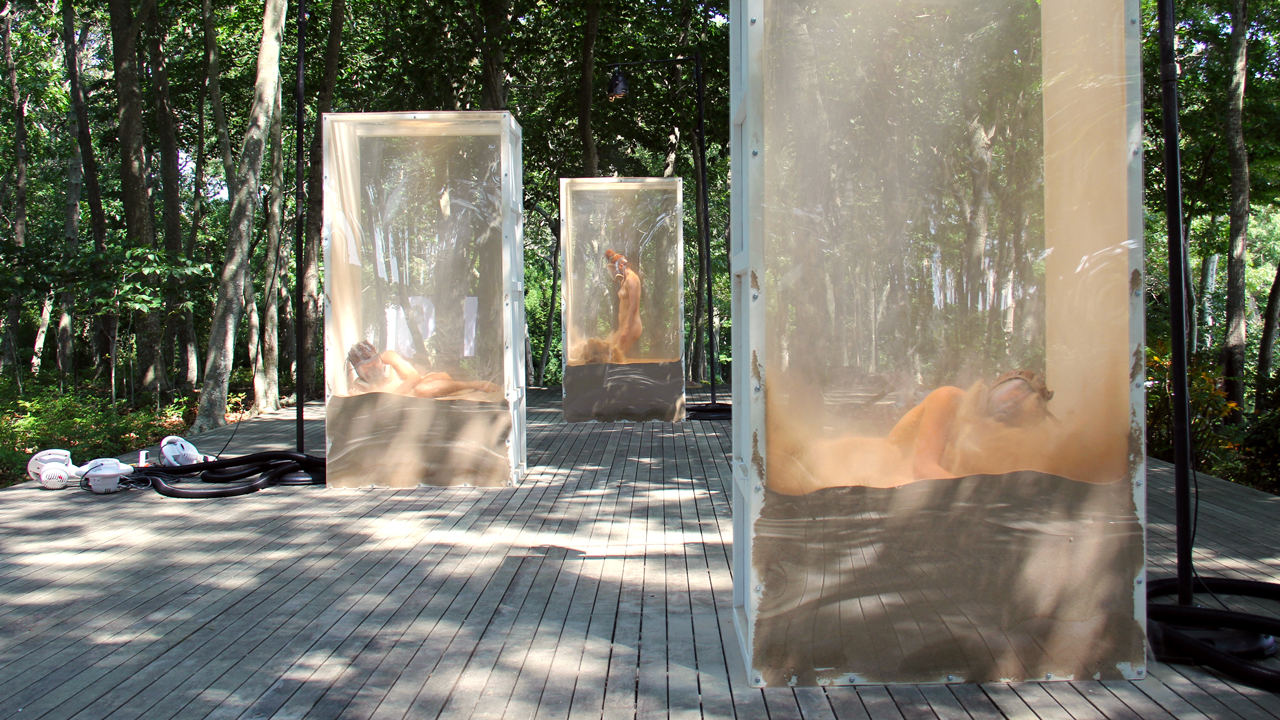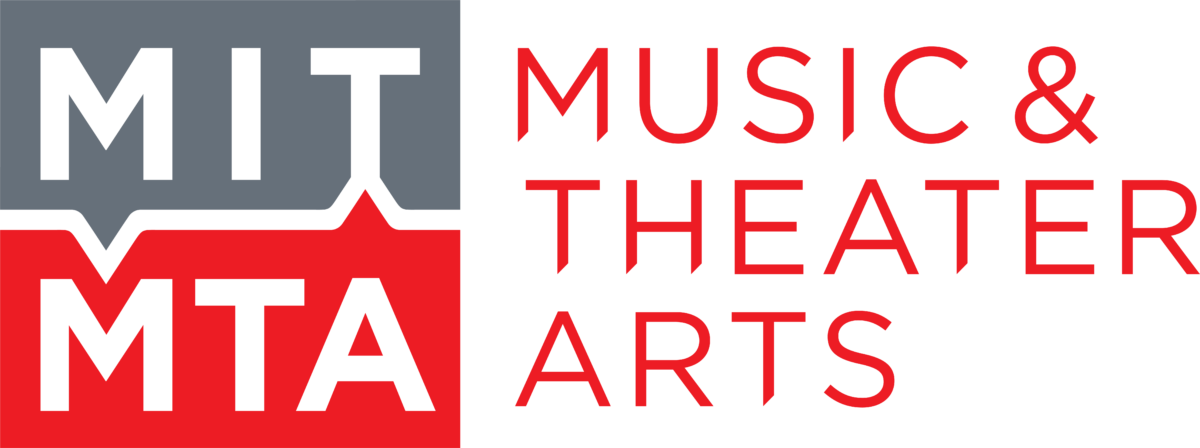
Thursday, December 9, 2021
MIT Building W97
345 Vassar Street, Cambridge, MA
Correspondences
Works by Ximena Garnica & Shige Moriya | LEIMAY
6:30 – 7:20pm
Film Screening
Correspondences – View #1, Watermill Center (18 min)
Correspondences – View #2, Astor Place (23 min)
8:00 – 9:30pm
Correspondences Prototype Exhibit
(Video Installations & Kinetic Sculpture Models)
Untitled In-Progress Live Showing from LEIMAY Ensemble
Q&A with the artists moderated by MIT Lecturer Dan Safer
Note: MIT’s Teaching Artist Ximena Garnica, artist Shige Moriya, and the LEIMAY Ensemble are in residency at W97 from November 30 – December 11, 2021. Correspondences Prototype Exhibit is on view until December 11, 2021.
Contribute to Correspondences Online Audience Files: correspondencesfiles.leimay.org
Social Media Tags: @artsatmit, @mitmta, @LEIMAYfoundation #LEIMAYworks #shigemoriya #ximenagarnica #leimayensemble
Films
Correspondences – View #1, Watermill Center
Film co-conceived, directed, choreographed, and edited by Ximena Garnica and Shige Moriya
Performed by the LEIMAY Ensemble: Krystel Copper*, Derek DiMartini*, Suhwa Kim
Other Credits: Shige Moriya (camera), Jeremy D. Slater (sound composition).
Correspondences – View #2, Astor Place
Film co-conceived, directed, choreographed, and edited by Ximena Garnica and Shige Moriya
Performed by the LEIMAY Ensemble: Masanori Asahara*, Ricardo Bustamante, Krystel Copper*, Ximena Garnica*, Brandon Perdomo
Other Credits: Shige Moriya and Moti Margolin (camera), Jeremy D. Slater (sound composition), Irena Romendik (costume fabrication).
Prototype Exhibit
Video Installation & Kinetic Sculpture Models by Ximena Garnica and Shige Moriya
Performed by the LEIMAY Ensemble: Krystel Copper*, Derek DiMartini, Ximena Garnica*, Andrea Jones, Sorin Prodea, and David Vento.
Other Credits: Soundtrack from Correspondences View # 2 Astor Place (sound),
Joshua Higgason and Christian Frederickson (MIT Technical Support)
Untitled In-Progress Live Showing
Direction and Choreography by Ximena Garnica and Shige Moriya
Additional Choreography and Performance by the LEIMAY Ensemble: Krystel Copper* & Masanori Asahara*
*Core Ensemble Member
Additional Credits
This residency is presented by the Center for Art, Science & Technology, MIT Music and Theater Arts, the Lukitsh Fund, and LEIMAY.
LEIMAY works are supported, in part, by the New York State Council on the Arts, the City Department of Cultural Affairs in partnership with the City Council, Mertz Gilmore Foundation, Dance/NYC, the Café Royal Cultural Foundation, the Village Alliance, 51 Astor Place.
Correspondences was first developed at LEIMAY’s studio in South Williamsburg, Brooklyn, NY.
The first phase performance-installation premiered at New York City’s Astor Place as part of HERE’s #stillHERE IRL program.
Production support provided by Yi Tu and Susan Wilson.
Facilitator and Moderator: Daniel Safer, Lecturer, MIT Theater Arts
Documentation Images: Laura Brichta, Chloé Bellemère, Paula Court Shige Moriya, Daphne Youree.
Ximena Garnica and Shige Moriya are a Colombian and Japanese artist duo working in the visual and performing arts fields as multidisciplinary and interdisciplinary artists, directors, choreographers, curators, and teachers. Their collaborative works include performances, sculptural, video, mixed-media, and light installations as well as photography and film projects. Garnica and Moriya also invest their energy in critical research, printed and digital publications, educational activities, and community projects based on resource sharing and collaboration.
Their work is rooted in questions of being, perception, interdependency, and coexistence. They look to expose the multiplicity of spatial and temporal intervals that exist within the body, between materials and environments. They are curious about what emerges when the stability of habits, affirmation of binaries, social norm expectations, and the crystallization of identity dissolve and expose the potentialities of being.
The LEIMAY Ensemble is a group of national and international dancers and performers who create body-centered works around the principle of LUDUS, a practice that explores methods to physically condition the body of the performers and develop a sensitivity to the “in-between space.” The group holds a regular practice at the CAVE studio in Brooklyn where they engage in the creation of new work as well as on teaching, training, research, and distillation of years of direct transmission of embodied knowledge by Japanese Butoh pioneers, Noguchi Taiso practitioners, and Experimental Theater innovators.
Website: www.LEIMAY.org
Masanori Asahara is a Japanese born dancer, choreographer, and improvisation artist based in Brooklyn, New York. Masanori has been a core member of the LEIMAY Ensemble since 2010. He has toured, taught, and performed with the ensemble for over a decade.
Krystel Copper is a second-generation immigrant dance artist born to parents from Argentina and Portugal. She joined LEIMAY as a member of the performance and research ensemble in 2016 for the premiere of Frantic Beauty at BAM. Copper holds a B.A. in Dance from the University of Maryland.
LEIMAY is a grassroots, POC immigrant artist-run presenting organization and performing arts ensemble that exists out of a live/workspace called CAVE in Williamsburg Brooklyn. The word “leimay” is a Japanese term symbolizing the moment of change as in the moment between darkness and the light of dawn, or the transition from one era to the other. Initiated by Shige Moriya of Japan in 1996 and joined by Ximena Garnica of Colombia in 2001, LEIMAY holds a regular NYC home season, offers classes to the public, brings in guest artists for workshops, and collaborates with presenting/educational partners across NYC and beyond. LEIMAY curates and presents various events and performance seasons throughout the years, including CAVE Gallery from 1996-2006, the NY Butoh Festival from 2003-2009, and SOAK from 2008-2018. LEIMAY’s studio CAVE, as cited in the book Alternative Histories: New York Art Spaces from 1960-2010 (published in 2012), is embedded in the aesthetic and social fabric of NYC as a site for experimentation for artists to innovate, perform, and exhibit.
Website: www.LEIMAY.org
Social: Facebook | Instagram | Twitter | Vimeo
Correspondences
In the current performance installation, individual performers wearing gas masks are enclosed inside transparent chambers partially filled with sand. As the performers repeatedly try to stand atop the sand, machines attached to the chambers intermittently trigger a blast of sand causing the performers to sink back down to the ground, only to begin to rise again. The sand blasts continuously occur in the chambers, even in the absence of a performer. This work reflects on “the power of rising” during these times in which many of us are experiencing heightened uncertainty and political and economic turmoil. The aim is not to pin a singular meaning to this work; instead, its power rests in the juxtapositions of multiplicities and as the title implies in its correspondences. The first phase of the performance installation is extremely adaptable and through the development of its second phase during this residency, it will be expanded into a unique experience for MIT.
This project was initiated at Robert Wilson’s The Watermill Center, where the current 3 chambers of the installation were built. A phase of the work is dedicated to the presentation in urban plazas and parks. To date, the installation performance has been shown in Manhattan at Astor Place (in partnership with HERE Arts Center), in Queens at Socrates Sculpture Park, and in upstate New York at Hurleyville Art Center. The second phase will continue and expand the work in collaboration with leading cultural and academic institutions. This residency at MIT, and a potential future campus performance, will launch this new phase and be a vital part of the ongoing development and life of the piece
Why are existential questions of being, interdependence, and coexistence, vital in these times of readjustment of powers and values?
Untitled In-Progress Live Showing
The elements of the choreographic materials presented today are rooted in our LUDUS practice.
Over the past decade, we have been developing LUDUS: a practice that explores methods to physically condition the body while developing a sensitivity to the “in-between space”. We seek a state of indeterminacy and ambiguity in which bodies are transmitters of potentialities.
Special thanks: our sincere gratitude to the Center for Art, Science & Technology and the MIT Music and Theater Arts, to the students from the Bodies in Motion and Intro to Acting MIT/MTA classes, and to everybody who has shared conversations, visits and reflections with us during this residency. Thank you to all my colleagues and the administration at MTA for their great support. Thanks to CAST’s producer and administration.




